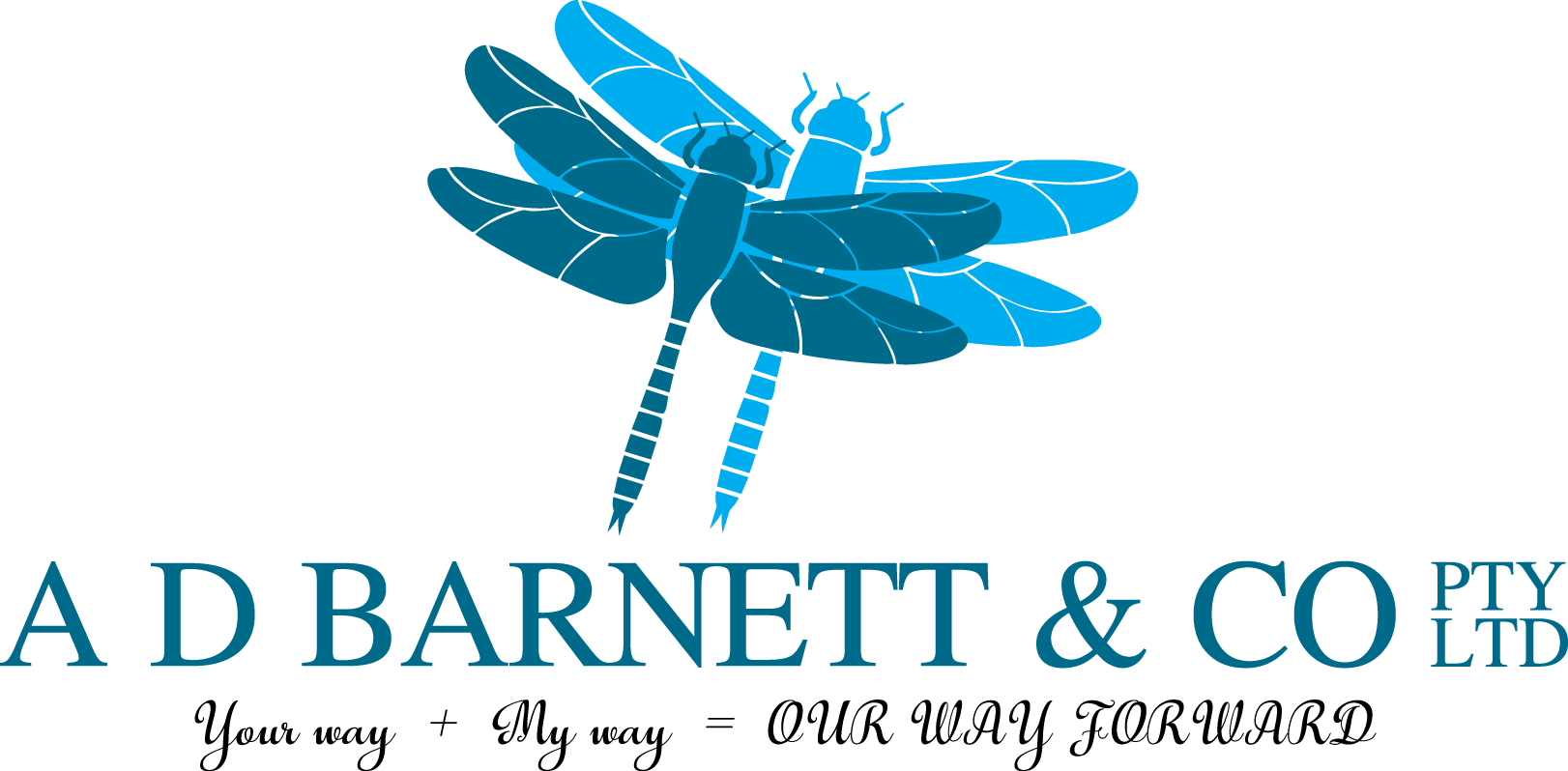The 120% technology and skills ‘boost’ deduction
The 120% skills and training, and technology costs deduction for small and medium business have passed Parliament. We’ll show you how to take maximise your deductions.
Almost a year after the 2022-23 Federal Budget announcement, the 120% tax deduction for expenditure by small and medium businesses (SME) on technology, or skills and training for their staff, is finally law. But there are a few complexities in the timing – to utilise the technology investment boost, you had to of purchased the technology and when it comes to acquiring eligible assets, installed it ready for use by 30 June 2023; that’s just seven days from the date the legislation passed Parliament.
Who can access the boosts?
The 120% skills and training, and technology boosts are available to small business entities (individual sole traders, partnership, company or trading trust) with an aggregated annual turnover of less than $50 million. Aggregated turnover is the turnover of your business and that of your affiliates and connected entities.
$20k technology investment boost
The Technology Investment Boost provides SMEs with a bonus deduction for expenses and depreciating assets for digital operations or digitising from 7:30pm (AEST) on 29 March 2022 until 30 June 2023.
You ‘incur’ an expense when you are in debt for it; this might be a tax invoice or it might be a contract where you are legally liable for the cost.
For depreciating assets, like computer hardware, there is an extra step. The technology needs to have been purchased and installed ready for use. For example, if you ordered 10 computers, you need to have received the computers and had them set up ready to use by at least 30 June 2023. Ordering them on 29 June won’t be enough to claim the boost if you did not receive them.
The types of expenses that might be eligible for the technology boost include:
- Digital enabling items – computer and telecommunications hardware and equipment, software, internet costs, systems and services that form and facilitate the use of computer networks;
- Digital media and marketing – audio and visual content that can be created, accessed, stored or viewed on digital devices, including web page design;
- E-commerce – goods or services supporting digitally ordered or platform-enabled online transactions, portable payment devices, digital inventory management, subscriptions to cloud-based services, and advice on digital operations or digitising operations, such as advice about digital tools to support business continuity and growth; or
- Cyber security – cyber security systems, backup management and monitoring services.
The technology also must be “wholly or substantially for the purposes of an entity’s digital operations or digitising the entity’s operations”. That is, there must be a direct link to your business’s digital operations. For example, claiming the drone you bought at say Christmas 2022 won’t be deductible unless your business is, for example, a real estate agency that needed a drone to take aerial images of client homes to market on their website. The expense needs to relate to how the business earns its income, in particular its digital operations.
Repair and maintenance costs can be claimed as long as the expenses meet the eligibility criteria.
Where the expenditure has mixed use (i.e., partly private), the bonus deduction applies to the proportion of the expenditure that is for business use.
There are a few costs that the technology boost won’t cover such as costs relating to employing staff, raising capital, construction of business premises, and the cost of goods and services the business sells. The boost will not apply to:
- Assets that you purchased but then sold within the relevant period (e.g., on or prior to 30 June 2023).
- Capital works costs (for example, improvements to a building used as business premises).
- Financing costs such as interest expenses.
- Salary or wage costs.
- Training or education costs, that is, training staff on software or technology won’t qualify (see Skills and Training Boost).
- Trading stock or the cost of trading stock.
Let’s look at the example of A Co Pty Ltd (A Co) that purchased multiple laptops on 15 July 2022 to help its employees to work from home. The total cost was $100,000. The laptops were delivered on 19 July 2022 and immediately issued to staff entirely for business use.
As the holder of the assets, A Co is entitled to claim a deduction for the depreciation of a capital expense. A Co can claim the cost of the laptops ($100,000) as a deduction under the temporary full expensing in its 2022-23 income tax return. It can also claim the maximum $20,000 bonus deduction in its 2022-23 income tax return.
The $20,000 bonus deduction is not paid to the business in cash but is used to offset against A Co’s assessable income. If the company is in a loss position, then the bonus deduction would increase the tax loss. The cash value to the business of the bonus deduction will depend on whether it generates a taxable profit or loss during the relevant year and the rate of tax that applies.
The good news for many eligible businesses is that your technology subscriptions and other products you use in your business might qualify for the boost.
The boost is claimed in your tax return with the extra 20% sitting on top your normal claim. That is, however the way the expense or asset is claimed (immediately or over time), the bonus 20% applies in the same way.
The Skills and Training Boost
The Skills and Training Boost gives you a 120% tax deduction for external training courses provided to employees. The aim of this boost is to help SMEs grow their workforce, including taking on less-skilled employees and upskilling them using external training to develop their skills and enhance their productivity.
Sole traders, partners in a partnership, independent contractors and other non-employees do not qualify for the boost as they are not employees. Similarly, associates such as spouses or partners, or trustees of a trust, don’t qualify.
As always, there are a few rules:
- Registration for the training course had to be from 7:30pm (AEST) on 29 March 2022 until 30 June 2024. If an employee is part the way through an eligible training course, enrolments in courses or classes after 29 March 2022 are eligible, not before.
- The training needs to be deductible to your business under ordinary rules. That is, the training is related to how the business earns its income.
- A registered training provider needs to charge your business (either directly or indirectly) for the training (see What organisations can provide training for the boost).
- The training must be for employees of your business and delivered in-person in Australia or online.
- The training provider cannot be your business or an associate of your business.
Training expenditure can include costs incidental to the training, for example, the cost of books or equipment necessary for the training course but only if the training provider charges the business for these costs.
Let’s look at an example. Animals 4U Pty Ltd is a small entity that operates a veterinary centre. The business recently took on a new employee to assist with jobs across the centre. The employee has some prior experience in animal studies and is keen to upskill to become a veterinary nurse. The business pays $3,500 for the employee to undertake external training in veterinary nursing. The training meets the requirements of a GST-free supply of education. The training is delivered by a registered training provider, registered to deliver veterinary nursing education.
The bonus deduction is calculated as 20% of the amount of expenditure the business could typically deduct. In this case, the full $3,500 is deductible as a business operating expense. Assuming the other eligibility criteria for the boost are satisfied, the bonus deduction is calculated as 20% of $3,500. That is, $700.
In this example, the bonus deduction available is $700. That does not mean the business receives $700 back from the ATO in cash, it means that the business is able to reduce its taxable income by $700. If the company has a positive amount of taxable income for the year and is subject to a 25% tax rate, then the net impact is a reduction in the company’s tax liability of $175. This also means that the company will generate fewer franking credits, which could mean more top-up tax needs to be paid when the company pays out its profits as dividends to the shareholders.
What organisations can provide training for the boost?
Not all courses provided by training companies will qualify for the boost; only those charged by registered training providers within their registration. Typically, this is vocational training to learn a trade or courses that count towards a qualification rather than professional development.
Qualifying training providers will be registered by:
- Tertiary Education Quality and Standards Agency (search the register – includes States and Territories)
- Australian Skills Quality Authority (ASQA)
- Victorian Registration and Qualifications Authority (search the register)
- Training Accreditation Council of Western Australia
While some training you might want to have engaged might not be delivered by registered training organisations, there is still a lot out there, particularly the short-courses offered by universities, or the flexible courses designed for upskilling rather than as a degree qualification. If you have recently completed performance reviews for staff and training is part of their development pathway, it might be worth exploring.
Tax Risk Warning
Backing a winner: Digital games tax
The digital games and interactive entertainment sector is the largest creative sector in the world and one of the fastest growing industries worldwide. The global digital games industry is worth around $250 billion and in Australia, grew 22% between 2020 and 2021 generating $226.5 million in income and employing over 1,300 fulltime workers. And, it’s an industry the Government wants to support with a new tax offset.
The Digital Games Tax Offset is equal to 30% of the company’s total qualifying Australian development expenditure incurred from 1 July 2022. Companies can claim up to $20 million per company (or group of companies) per year (to reach the cap a company would need to spend around $66.7 million in eligible expenditure).
State based tax incentives are also available in South Australia, Victoria and New South Wales offering an additional 10% and Queensland offering 15% on top of the federal support. Globally, a 40% tax offset is standard for this industry so the tax offset brings Australia back into a competitive position.
Who is eligible?
Companies that are Australian tax residents or foreign tax residents with a permanent establishment in Australia can qualify.
To access the offset, the company needs a certificate issued by the Arts Minister following the completion of a new digital game, the porting of a digital game to a new platform, or for ongoing development of one or more existing digital games during the income year. This certificate then determines the offset claimed in the tax return with the Minister determining the amount of qualifying expenditure. More information will be available on the arts.gov.au website in early July 2023.
The company’s qualifying Australian development expenditure incurred needs to be at least $500,000 (could be over multiple years).
What is development expenditure?
The way the rules work is that any expenditure that a company incurs in relation to the development of the qualifying game is eligible expenditure…unless it is specifically excluded. A company develops a game by doing any of the activities necessary to complete, port, update, improve or maintain an eligible game.
The legislation takes a further step by specifically including employee remuneration or independent contractors engaged by the company to carry out work on the development of the game (excluding bonuses linked to the performance of the company or the game). Prototyping is also specifically included as is underlying game technology.
Employees that are not developing the game, for example admin staff or overseas contractors, are excluded. As are corporate costs like business overheads, marketing, travel, entertainment etc.
What games are eligible?
A digital game that can receive a classification and is made available to the general public over the internet (i.e., games developed for in-house purposes don’t qualify). The game does not include gambling or gambling like elements (loot boxes are likely to make a game ineligible if for example, the virtual items can be sold for currency) nor is used for advertising or for commercial purposes.

Australian digital games successes
Remember Fruit Ninja? Fruit Ninja, founded by HalfBrick, became a sensation in 2015 with over 1 billion downloads. Who knew a game that slices fruit with a sword would capture so much attention. Anyone with kids would have seen Crossy Road developed by Melbourne based Hipster Whale. Ninety days after it release it had 50 million downloads, earning over $10m. The Sims Freeplay was created by a merger of Melbourne studios Iron Monkey and Firemint when they were purchased by EA Games. Then there is Melbourne based Big Ant Studios, one of the world’s biggest sports game developers and known for games such as the Tennis World Tour Game, Cricket 22 and an upcoming Rugby World Cup 2023 game.
What changed on 1 July 2023
Employers & business
- Superannuation guarantee increases to 11% from 10.5%
- National and Award minimum wage increases take effect.
- The minimum salary that must be paid to a sponsored employee – the Temporary Skilled Migration Income Threshold – increased to $70,000 from $53,900.
- Work restrictions for student visa holders reintroduced to 48 hours per fortnight.
- The cap on claims via the small claims court procedures for workers to recover unpaid work entitlements increases from $20,000 to $100,000.
- Energy Bill Relief Fund for small business kicks in – it will apply to your energy bills if you meet the criteria.
- Sharing economy reporting to the ATO commences for electronic distribution platforms.
Superannuation
- Superannuation guarantee increases to 11%
- Indexation increases the general transfer balance cap to $1.9 million.
- Minimum pension amounts for super income streams return to default rates.
- SMSF transfer balance event reporting moves from annual to quarterly for all funds.
For you and your family
- The new 67 cent fixed rate method for working from home deductions – make sure you have a record of when you work from home. The ATO won’t accept a simple “I work from home every Wednesday” x 8 hours calculation.
- Access to the first home loan guarantee expands to “friends, siblings, and other family members.”
- The Medicare low income threshold has increased for 2022-23.
- The child care subsidy will increase from 10 July 2023 for families with household income under $530,000. See the Services Australia website for details.
- New parents able to claim up to 20 weeks paid parental leave.
- Access the age pension increased to 67 years of age.
Important: 1 July 2023 wage increases
For employers, incorrectly calculating wages is not portrayed as a mistake, it’s “wage theft.” Beyond the reputational issues of getting it wrong, the Fair Work Commission backs it up with fines of $9,390 per breach for a corporation. In 2021-22 alone, the Fair Work Ombudsman recovered $532 million in unpaid wages recovered for over 384,000 workers.
On 1 July 2023, award rates of pay and the National Minimum Wage increased by 5.75%.
It is critically important that all employers review their payroll systems and ensure they are applying the correct rates and Awards.
The National Minimum Wage applies to workers not covered by an Award or registered agreement. From 1 July 2023, the National Minimum wage has increased to $23.23 per hour ($882.80 per week for a full time employee working a standard 38 hours week).
For casuals, the minimum wage including the 25% casual loading is a minimum of $29.04 per hour.
For workers under an Award, adult minimum award wages increase by 5.75% applied from the first full pay period on or after 1 July 2023. Proportionate increases apply to junior workers, apprentice and supported wages.
In addition, the superannuation guarantee increased from 10.5% to 11% on 1 July 2023.
If the employment agreement with your workers states the employee is paid on a ‘total remuneration’ basis (base plus SG and any other allowances), then their take home pay might be reduced by 0.5%. That is, a greater percentage of their total remuneration will be directed to their superannuation fund. For employees paid a rate plus superannuation, then their take home pay will remain the same and the 0.5% increase will be added to their SG payments.
Cents per kilometre increase
The cents per kilometre rate for motor vehicle expenses for 2023-24 has increased to 85 cents.
Quote of the month
“Decency is avoiding disrespect, not avoiding disagreement. Integrity is trying to get it right, not being right.”
Adam Grant, Professor, Wharton School, University of Pennsylvania
Note: The material and contents provided in this publication are informative in nature only. It is not intended to be advice and you should not act specifically on the basis of this information alone. If expert assistance is required, professional advice should be obtained.





